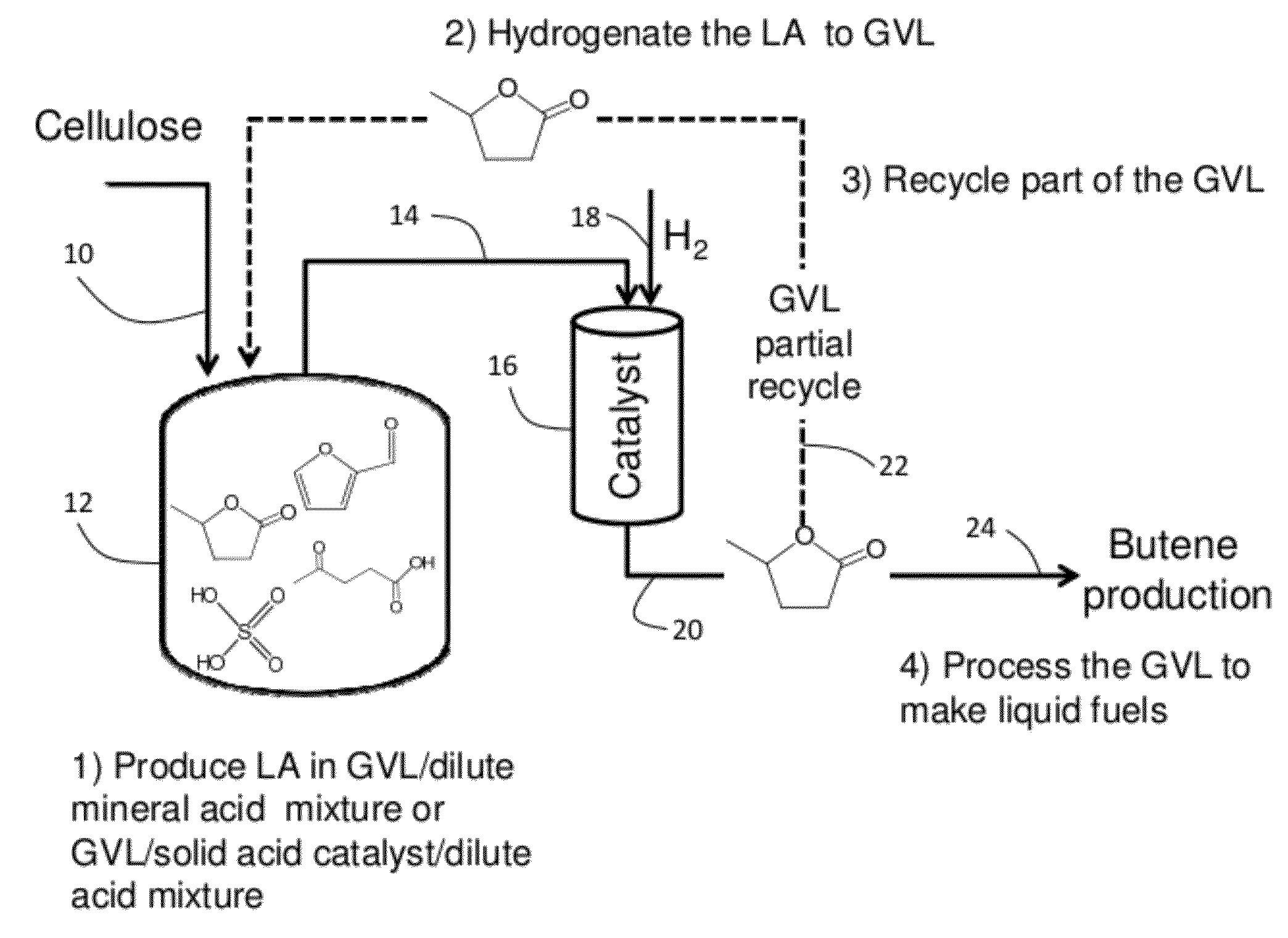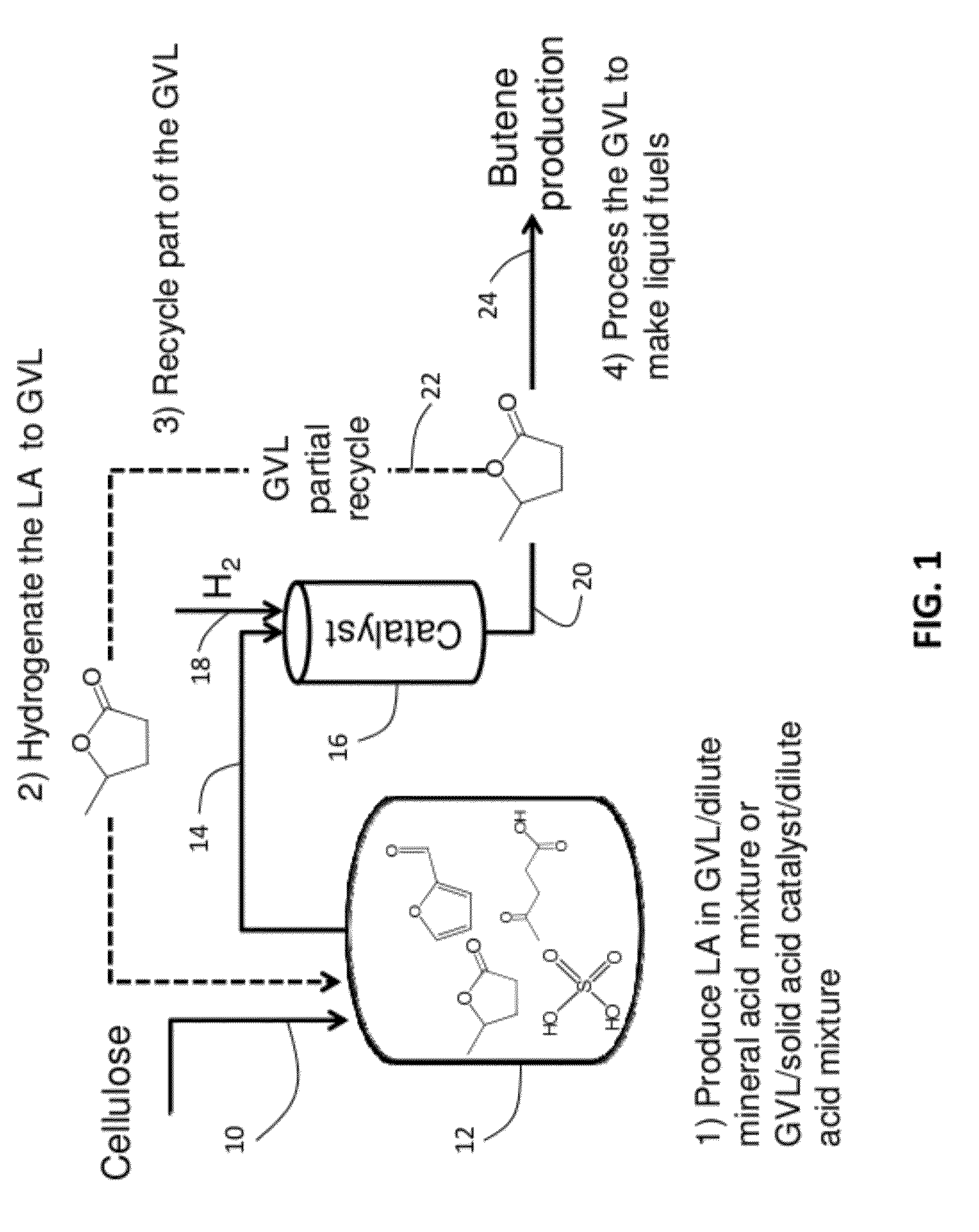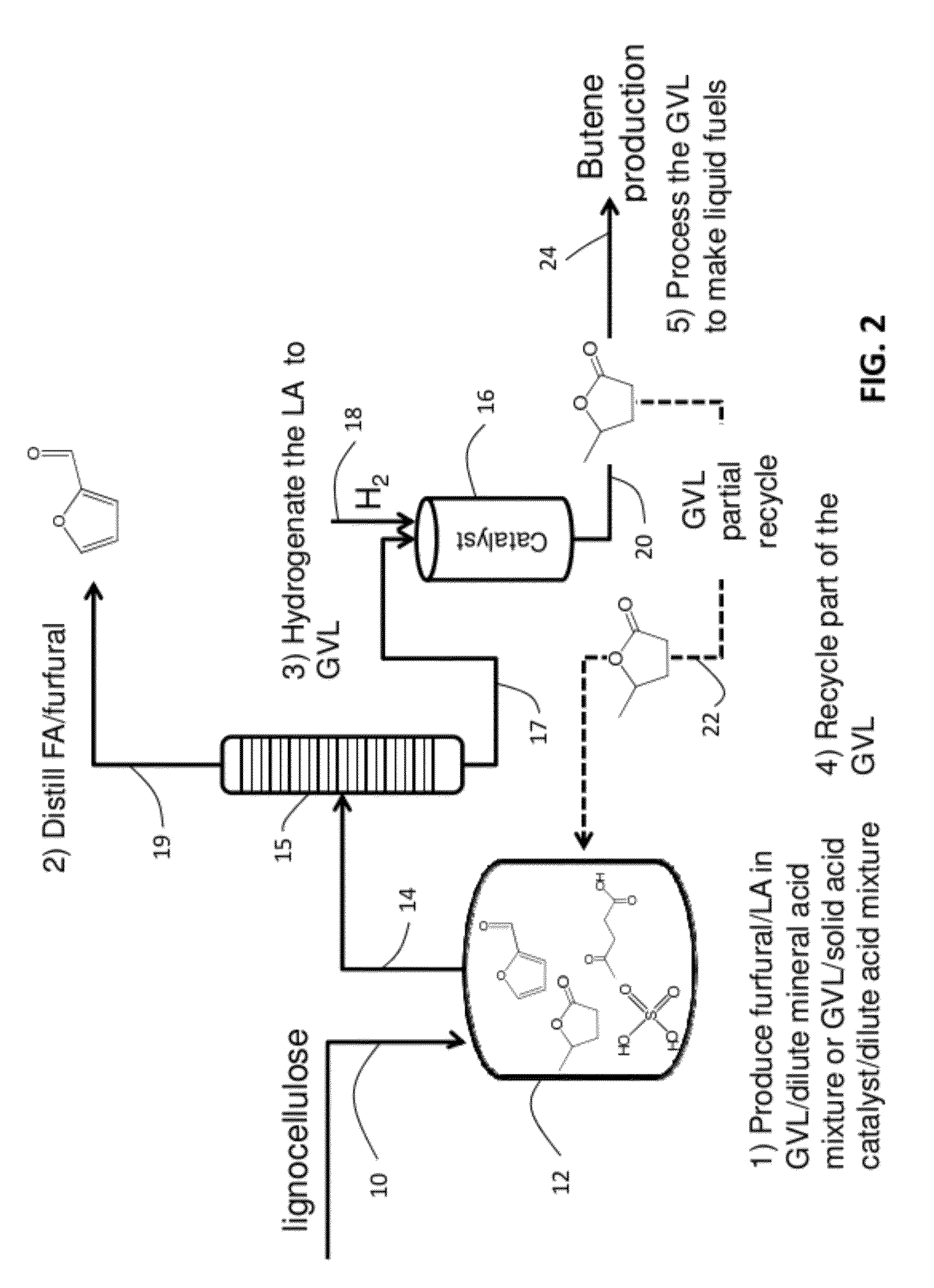PRODUCTION OF LEVULINIC ACID, FURFURAL, AND GAMMA VALEROLACTONE FROM C5 and C6 CARBOHYDRATES IN MONO- AND BIPHASIC SYSTEMS USING GAMMA- VALEROLACTONE AS A SOLVENT
a technology of gamma valerolactone and c5 and c6 carbohydrates, which is applied in the preparation of carbonyl compounds, organic chemistry, carboxylic compound preparations, etc., can solve the problems of affecting the performance of heterogeneous catalysts used subsequently, affecting the scale-up of these processes, and requiring costly purification steps
- Summary
- Abstract
- Description
- Claims
- Application Information
AI Technical Summary
Benefits of technology
Problems solved by technology
Method used
Image
Examples
Embodiment Construction
Abbreviations and Definitions:
[0044]“Biomass” as used herein includes materials containing cellulose, hemicellulose, lignin, protein and carbohydrates such as starch and sugar. Common forms of biomass include trees, shrubs and grasses, corn and corn husks as well as municipal solid waste, waste paper and yard waste. Biomass high in starch, sugar or protein such as corn, grains, fruits and vegetables, is usually consumed as food. Conversely, biomass high in cellulose, hemicellulose and lignin is not readily digestible by humans and is primarily utilized for wood and paper products, fuel, or is discarded as waste. “Biomass” as used herein explicitly includes branches, bushes, canes, corn and corn husks, energy crops, forests, fruits, flowers, grains, grasses, herbaceous crops, leaves, bark, needles, logs, roots, saplings, short rotation woody crops, shrubs, switch grasses, trees, vegetables, vines, hard and soft woods. In addition, biomass includes organic waste materials generated fr...
PUM
| Property | Measurement | Unit |
|---|---|---|
| partition coefficient | aaaaa | aaaaa |
| temperature | aaaaa | aaaaa |
| temperature | aaaaa | aaaaa |
Abstract
Description
Claims
Application Information
 Login to View More
Login to View More - R&D
- Intellectual Property
- Life Sciences
- Materials
- Tech Scout
- Unparalleled Data Quality
- Higher Quality Content
- 60% Fewer Hallucinations
Browse by: Latest US Patents, China's latest patents, Technical Efficacy Thesaurus, Application Domain, Technology Topic, Popular Technical Reports.
© 2025 PatSnap. All rights reserved.Legal|Privacy policy|Modern Slavery Act Transparency Statement|Sitemap|About US| Contact US: help@patsnap.com



